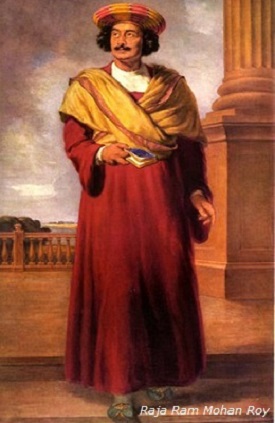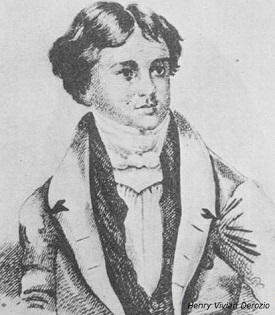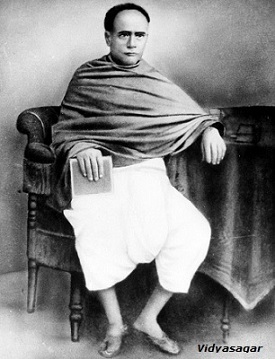
- Modern Indian History Tutorial
- Modern Indian History - Home
- Decline of Mughal Empire
- Bahadur Shah I
- Jahandar Shah
- Farrukh Siyar
- Muhammad Shah
- Nadir Shah’s Outbreak
- Ahmed Shah Abdali
- Causes of Decline of Mughal Empire
- South Indian States in 18th Century
- North Indian States in 18th Century
- Maratha Power
- Economic Conditions in 18th Century
- Social Conditions in 18th Century
- Status of Women
- Arts and Paintings
- Social Life
- The Beginnings of European Trade
- The Portuguese
- The Dutch
- The English
- East India Company (1600-1744)
- Internal Organization of Company
- Anglo-French Struggle in South India
- The British Conquest of India
- Mysore Conquest
- Lord Wellesley (1798-1805)
- Lord Hastings
- Consolidation of British Power
- Lord Dalhousie (1848-1856)
- British Administrative Policy
- British Economic Policies
- Transport and Communication
- Land Revenue Policy
- Administrative Structure
- Judicial Organization
- Social and cultural Policy
- Social and Cultural Awakening
- The Revolt of 1857
- Major Causes of 1857 Revolt
- Diffusion of 1857 Revolt
- Centers of 1857 Revolt
- Outcome of 1857 Revolt
- Criticism of 1857 Revolt
- Administrative Changes After 1858
- Provincial Administration
- Local Bodies
- Change in Army
- Public Service
- Relations with Princely States
- Administrative Policies
- Extreme Backward Social Services
- India & Her Neighbors
- Relation with Nepal
- Relation with Burma
- Relation with Afghanistan
- Relation with Tibet
- Relation with Sikkim
- Relation with Bhutan
- Economic Impact of British Rule
- Nationalist Movement (1858-1905)
- Predecessors of INC
- Indian National Congress
- INC & Reforms
- Religious & Social Reforms
- Religious Reformers
- Women’s Emancipation
- Struggle Against Caste
- Nationalist Movement (1905-1918)
- Partition of Bengal
- Indian National Congress (1905-1914)
- Muslim & Growth Communalism
- Home Rule Leagues
- Struggle for Swaraj
- Gandhi Assumes Leadership
- Jallianwalla Bagh Massacre
- Khilafat & Non-Cooperation
- Second Non-Cooperation Movement
- Civil Disobedience Movement II
- Government of India Act (1935)
- Growth of Socialist Ideas
- National Movement World War II
- Post-War Struggle
- Clement Attlee’s Declaration
- Reference & Disclaimer
Social and Cultural Awakening
Western conquest exposed the weakness and decay of Indian society. Hence, thoughtful Indians began to look for the defects of their society and for the ways and means of removing them.
Raja Ram Mohan Roy
The central figure in the awakening was Ram Mohan Roy, who is rightly regarded as the first great leader of modern India.

Ram Mohan Roy was pained by the stagnation and corruption of the contemporary Indian society, which was at that time dominated by caste and convention. Popular religion was full of superstitions and was exploited by ignorant and corrupt priests.
The upper classes were selfish and often sacrificed social interest to their own narrow interests.
Ram Mohan Roy possessed great love and respect for the traditional philosophic systems of the East; but, at the same time, he believed that Western culture alone would help to regenerate Indian society.
In particular, Ram Mohan Roy wanted his countrymen to accept the rational and scientific approach and the principle of human dignity and social equality of all men and women. He was also in favor of the introduction of modern capitalism and industry in the country.
Ram Mohan Roy represented a synthesis of the thought of East and West. He was a learned scholar who knew more than dozen languages including Sanskrit, Persian, Arabic, English, French, Latin, Greek, and Hebrew.
As a young man, Ram Mohan Roy had studied Sanskrit literature and Hindu philosophy at Varanasi and Koran and Persian and Arabic literature at Patna.
Ram Mohan Roy was also well-acquainted with Jainism and other religious movements and sects of India.
Ram Mohan Roy made an intensive study of Western thought and culture. Only to study the Bible in the original form, he learnt Greek and Hebrew.
In 1809, Ram Mohan Roy wrote his famous work Gift to Monotheists in Persian. In this work, he put forward weighty arguments against belief in many gods and for the worship of a single God.
Ram Mohan Roy settled in Calcutta in 1814 and soon attracted a band of young men with whose cooperation he started the Atmiya Sabha.
In particular, Ram Mohan Roy vigorously opposed worship of idols, rigidity of caste, and prevalence of meaningless religious rituals. He condemned the priestly class for encouraging and inculcating these practices.
Roy held that all the principal ancient texts of the Hindus preached monotheism or worship of one God.
Roy published the Bengali translation of the Vedas and of five of the principal Upanishads to prove his point. He also wrote a series of tracts and pamphlets in defence of monotheism.
In 1820, Roy published his Precepts of Jesus in which he tried to separate the moral and philosophic message of the New Testament, which ho praised, from its miracle stories.
Roy wanted the high-moral message of Christ to be incorporated in Hinduism. This earned for him the hostility of the missionaries.
Roy vigorously defended Hindu religion and philosophy from the ignorant attacks of the missionaries. At the same time, he adopted an extremely friendly attitude towards other religions.
Roy believed that basically all religions preach a common message and that their followers are all brothers under the skin.
In 1829, Roy founded a new religious society, the Brahma Sabha, later known as the Brahmo Samaj, whose purpose was to purify Hinduism and to preach theism or the worship of one God. The new society was to be based on the twin pillars of reason and the Vedas and Upanishads.
The Brahmo Samaj laid emphasis on human dignity, opposed idolatry, and criticized such social evils as the practice of Sati.
Ram Mohan Roy was one of the earliest propagators of modem education, which he looked upon as a major instrument for the spread of modern ideas in the country.
In 1817, David Hare, who had come to India in 1800 as a watchmaker, but who spent his entire life in the promotion of modern education in the country, founded the famous Hindu College.
Ram Mohan Roy gave most enthusiastic assistance to Hare in his educational projects.
Roy maintained at his own cost an English school in Calcutta from 1817 in which, among other subjects, mechanics and the philosophy of Voltaire were taught.
In 1825, Roy established a Vadanta College in which courses both in Indian learning and in Western social and physical sciences were offered.
Ram Mohan Roy represented the first glimmerings of the rise of national consciousness in India.
In particular, Roy opposed the rigidities of the caste system, which he declared, “has been the source of want of unity among us.” He believed that the caste system was double evil: it created inequality and it divided people and deprived them of patriotic feeling.
Ram Mohan Roy was pioneer of Indian journalism. He brought out journals in Bengali, Persian, Hindi, and English to spread scientific literary, and political knowledge among the people, to educate public opinion on topics of current interest, and to represent popular demands and grievances before the Government.
Roy was also the initiator of public agitation on political questions in the country.
Roy condemned the oppressive practices of the Bengal Zamindars, which had reduced the peasants to a miserable condition.
Roy demanded that the maximum rents paid by the actual cultivators of land should be permanently fixed so that they too would enjoy the benefits of the Permanent Settlement of 1793.
Roy also protested against the attempts to impose taxes on tax-free lands.
Roy demanded the abolition of the Company’s trading rights and the removal of heavy export duties on Indian goods.
Roy raised the demands for the Indianization of the superior services, separation of the executive and the judiciary, trial by jury, and judicial equality between Indians and Europeans.
Ram Mohan Roy took a keen interest in international events and everywhere he supported the cause of liberty, democracy, and nationalism and opposed injustice, oppression, and tyranny in every form.
Roy condemned the miserable condition of Ireland under the oppressive regime of absentee landlordism. He publicly declared that he would emigrate from the British Empire if Parliament failed to pass the Reform Bill.
Henry Vivian Derozio
A radical trend arose among the Bengali intellectuals during the late 1820s and the 1830s. This trend was more modern than Roy’s ideology and is known as the “Young Bengal Movement.”

The leader and inspirer of Young Bengal Movement was the young Anglo-Indian Henry Vivian Derozio, who was born in 1809 and who taught at Hindu College from 1826 to 1831.
Derozio possessed a dazzling intellect and followed the most radical views of the time. He was inspired by the great French Revolution.
Derazio and his famous followers, known as the Derozians and Young Bengal, were fiery patriots. Perhaps, he was the first nationalist poet of modern India.
Derozio was removed from the Hindu College in 1831 because of his radicalism and died of cholera soon after at the young age of 22.
Even so, the Derozians carried forward Ram Mohan Roy's tradition of educating the people in social, economic, and political questions through newspapers, pamphlets, and public associations.
Surendranath Banerjee, the famous leader of the nationalist movement, described the Derozians as "the pioneers of the modern civilization of Bengal, the conscript fathers of our race whose virtues will excite veneration and whose failings will be treated with gentlest consideration."
Tatvabodhini Sabha
In 1839, Debendranath Tagore, father of Rabindranath Tagore, founded the Tatvabodhini Sabha to propagate Ram Mohan Roy's ideas.
The Tatvabodhini Sabha and its organ the Tatvabodhini Patrika promoted a systematic study of India's past in the Bengali language.
In 1843, Debendranath Tagore reorganized the Brahmo Samaj and put new life into it.
The Samaj actively supported the movement for widow remarriage, abolition of polygamy, Women's education, improvement of the ryot's condition, etc.
Pandit Ishwar Chandra Vidyasagar
Born in 1820 in a very poor family, Vidyasagar struggled through hardship to educate himself and in the end, became the principal of the Sanskrit College (in 1851).

Though Vidyasagar was a great Sanskrit scholar, his mind was open to the Western thought, and he came to represent a happy blend of Indian and Western culture.
Vidyasagar resigned from government service, as he would not tolerate undue official interference.
Vidyasagar’s generosity to the poor was fabulous. He seldom possessed a warm coat that he invariably gave it to the first naked beggar he met on the street.
Vidyasagar evolved a new technique of teaching Sanskrit. He wrote a Bengali primer which is used till this day. By his writings, he helped in the evolution of a modern prose style in Bengali.
Vidyasagar opened the gates of the Sanskrit college to non-Brahmin students as well.
To free Sanskrit studies from the harmful effects of self-imposed isolation, Vidyasagar introduced the study of Western thought in the Sanskrit College. He also helped to establish a college, which is now named after him.
He raised his powerful voice, backed by the weight of immense traditional learning, in favor of widow remarriage in 1855.
The first lawful Hindu widow remarriage among the upper castes in India was celebrated in Calcutta on 7 December 1856 under the inspiration and supervision of Vidyasagar.
In 1850, Vidyasagar protested against child-marriage. All his life, he campaigned against polygamy.
As a Government Inspector of Schools, Vidyasagar organized thirty five girls’ schools, many of which he ran at his own expense.
The Bethune School, founded in Calcutta in 1849, was the first fruit of the powerful movement for women’s education that arose in the 1840s and 1850s.
As Secretary to the Bethune School, Vidyasagar was one of the innovators of higher education for women.
In 1848, several educated young men formed the Students’ Literary and Scientific Society, which had two branches, the Gujarati and the Marathi (Dnyan Prasarak Mandlis).
Jotiba Phule
In 1851, Jotiba Phule and his wife started a girls’ school at Poona and soon many other schools came up.
Phule was also a pioneer of the widow remarriage movement in Maharashtra.
Vishnu Shastri Pundit founded the Widow Remarriage Association in the 1850s.
Karsandas Mulji started a weekly paper in Gujarati called “the Satya Prakash” in 1852 to advocate widow remarriage.
An outstanding champion of a new learning and social reform in Maharashtra was Gopal Hari Deshmukh who became famous by the penname of ‘Lokahitawadi.’
Deshmukh advocated the reorganization of Indian society on rational principles and modern humanistic and secular values.
Dadabhahi Naoroji was another leading social reformer of Bombay. He was one of the founders of an association to reform the Zoroastrian religion and the Parsi Law Association which agitated for the grant of a legal status to women and for uniform laws of inheritance and marriage for the Parsis.